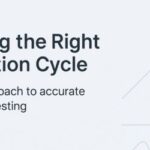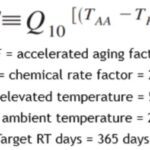Orthopedic OEMs don’t always have the luxury of “just adding another supplier.” When implants require porous coatings, titanium alloys, or specialized finishing, there may be only a handful of vendors worldwide qualified to deliver. Swapping one for another often triggers costly re-validation — and sometimes, new FDA or ISO 13485 submissions.
Why It Matters in Orthopedics
In a space where tight tolerances and regulatory scrutiny define success, supplier dependency compounds risk:
- A single vendor delay can halt entire product lines
- Regulatory submissions for a supplier change can take months
- Quality inconsistencies introduce recall and audit exposure
For orthopedic OEMs, a disruption isn’t just a timeline slip — it can cascade into compliance challenges, lost revenue, and reputational damage.
The Limits of Second-Sourcing
Conventional wisdom says “add another supplier.” But in orthopedics, that’s rarely practical:
- Specialized coatings and alloys require years of qualification
- Every handoff increases risk of compliance misalignment
- Re-validations consume both regulatory resources and budgets
Instead of scattering critical processes across multiple niche vendors, the smarter approach is reducing the number of dependencies you can control.
The LSO Approach
At Life Science Outsourcing, we help orthopedic OEMs strengthen supply chain resilience by consolidating critical downstream services under one roof:
- Sterilization & Packaging Expertise: ISO 13485-certified processes built around orthopedic device needs
- Integrated Kitting & Labeling: Reducing vendor handoffs that otherwise multiply compliance risk
- Regulatory Familiarity: Deep experience navigating FDA and notified body expectations for orthopedic submissions
This integration doesn’t replace your specialized implant suppliers. It protects your timelines and compliance posture from risks you can control.
The Takeaway
In orthopedics, second-sourcing isn’t always realistic. But reducing dependency is. By consolidating sterilization, packaging, and logistics with a partner who already understands orthopedic regulatory pathways, OEMs can mitigate risks they can actually manage.
Download Our Vendor Dependency Risk Worksheet
Want to uncover where your single points of failure are hiding? Our worksheet helps orthopedic OEMs:
- Map critical supplier dependencies
- Assess regulatory and compliance risks of supplier changes
- Identify opportunities to consolidate services and reduce exposure
Download the Vendor Dependency Risk Worksheet to map and mitigate single-source vulnerabilities





